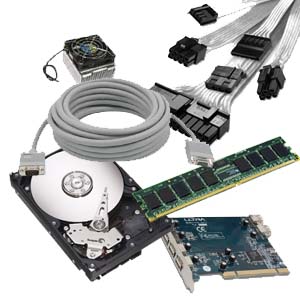Upgrade your home network by downgrading it


Last year I wrote about the merits of downgrading your computer. At the time, I had swapped out the CPU and GPU from my workstation as I shifted it to server duty.
Since I was no longer using it for games, I didn't see any reason to have it running 24 hours a day and needlessly draining electricity.
Also See:
The end result of that downgrade was a $20 reduction in my monthly electric bill. Of course, I still had a big beast of a tower case full of fans and hard drives.
Last month I finally decided to streamline my home server configuration. I was running Ubuntu workstation on the old tower system, and it also doubled as network storage for backups of our various laptops and tablets. I decided to split up the server and storage.
For the server, I chose the lowest cost HP slimline s5t desktop. The one I purchased was on a time-limited special, and I ended up spending less than $300 on it. I added a Crucial 64GB SSD drive for a more reliable boot drive that drew less power, was quiet, and super fast.
For storage the old system used to have 6 250GB SATA drives, attached to a 3ware RAID controller in a RAID6 configuration. Large storage drives are a lot cheaper now, so I chose to get a QNAP Turbo NAS TS-219P+, and populated it with a pair of Western Digital Caviar Black 1.5TB hard drives in a RAID1 mirror configuration.
The two devices drain considerably less power than the old tower system, and are an order of magnitude quieter. I haven't had a chance to gauge the difference in power usage at home yet, but I suspect there will be a substantial savings with the next utility bill.
The QNAP is an interesting device. Aside from providing network-accessible storage, it runs Linux underneath the hood and comes with a slew of useful features.
For one thing, it can be mounted on another machine as an iSCSI device. It has a built-in web server, as well as streaming media capabilities. It has the ability to function as an Apple Time Machine backup server, which I have already put to use by backing up my MacBook Air.
If it wasn't for my need to have the server also operate as a workstation, and provide more enhanced capabilities, I could very easily have used just the QNAP device on my network and gotten rid of the server altogether.
Down the road, if I ever need to expand the storage, I can simply remove one of the mirrored drives, add a newer, larger-capacity one, and let the mirror rebuild. Once done, I could swap the other old drive and repeat the process.
When I wrote the original article, the intent was to show that if you didn't need an excessive amount of computing power, you could save money on both hardware and electric bills by downgrading to something that meets your needs instead of exceeding them.
These days, you don't necessarily have to give up computing power to reduce your carbon footprint and save money. PCs are pretty inexpensive these days, as is storage. You can build out your network now with components that are much cheaper than they were 5 years ago, without sacrificing performance. My new setup is even faster than the old one, and will result in a substantial savings over time.